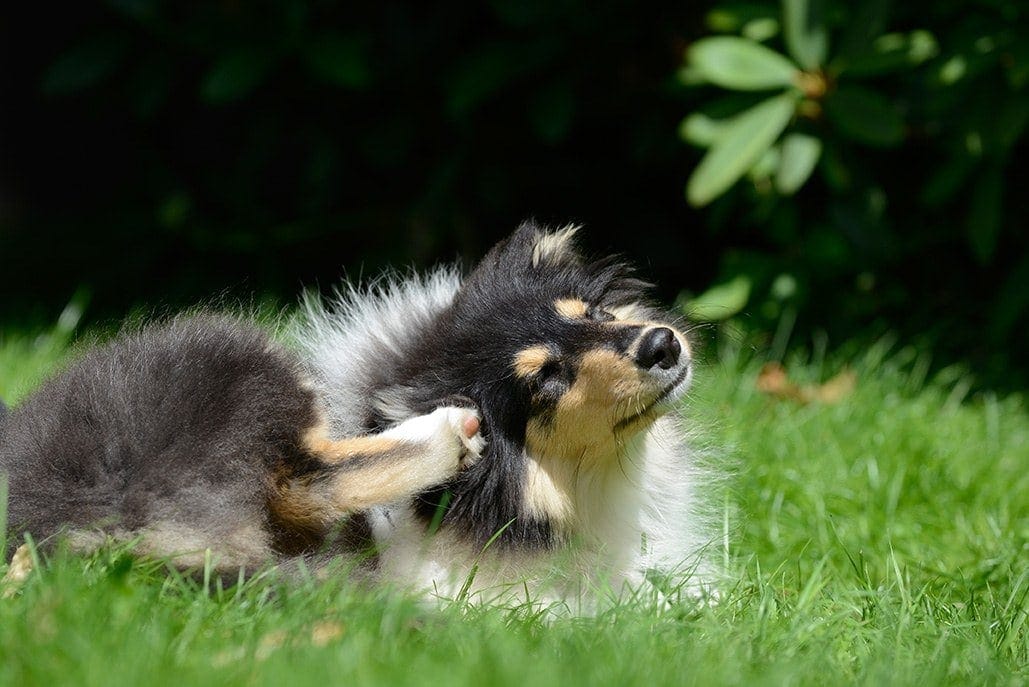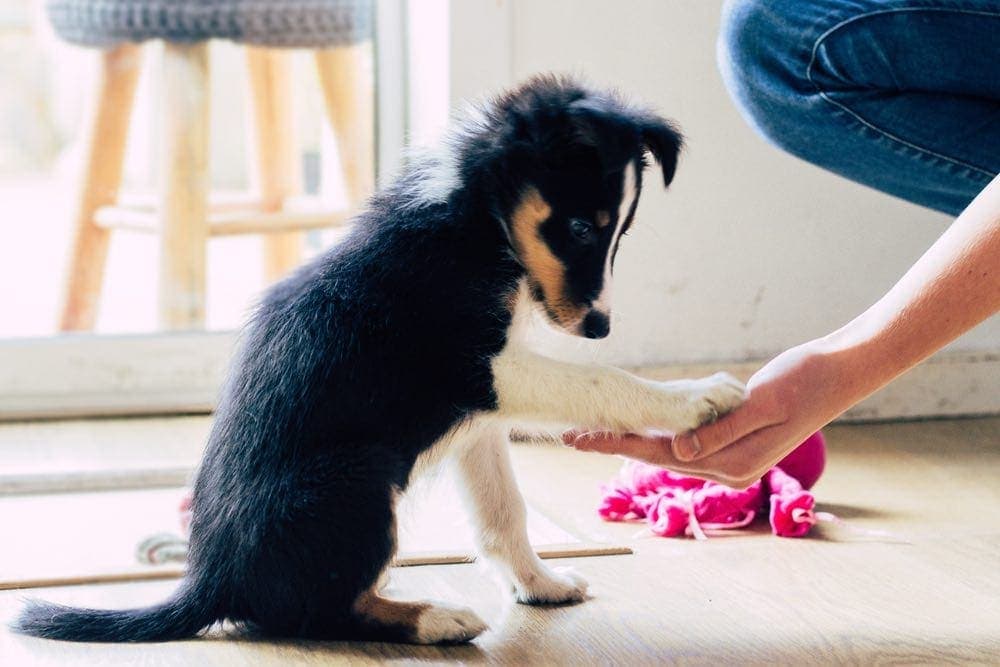Dominant or Fearful?
Firstly, we should address what you mean by “dominant.” The theory that dogs are aggressively dominant and want to be “alpha” has fallen out of favor. The behaviors we used to call “dominant”(such as resource guarding) have been found to be rooted in fear. So, if you mean that the other dog is dominant because he doesn’t allow other dogs to approach his food, his couch, or his human—he’s more likely to be fearful and defending his favorite things.
The RSPCA says: “It is now widely recognised by animal behavioural specialists that dogs that use aggression towards humans or other dogs are not trying to be ‘dominant’. Rather, the aggression is usually the result of social confusion, frustration, fear, anxiety or learning.”
Can You Put off the Meeting?
Secondly, you need to decide if this meeting has to happen. If the adult dog is just an acquaintance, it may be best leaving the meeting until you know more about your new puppy and have given them some good, positive experiences with other dogs—if this meeting goes wrong, you don’t want to put them off meeting new dogs in the future. Of course, it may be that the adult dog belongs to you already, or to a housemate or family member, in which case, the meeting can’t be put off.
Where Should They Meet?
It’s usually a good idea to have the meeting outside the home. The older dog is used to having the house to himself, and if he’s prone to being a bit defensive of his resources, it’s best to take him out of that environment so he doesn’t see your puppy like such a threat. Consider a safe, enclosed, neutral space—like a friend’s garden. Remember to check the vaccination status of your new puppy before taking him anywhere!
- Related Read: Puppy Socialization Checklist
How to Introduce a Puppy to an Adult Dog
Ideally, you want both dogs to be near one another, but not actually paying one another any attention. Food or toys can be used, and the distance needs to be great enough that the adult dog accepts the puppy’s presence without feeling threatened or needing to protect his things. If both dogs are totally relaxed, you can try moving them a little closer and continuing the distraction. If the adult dog is still relaxed with the situation, and you are getting within a few meters of one another, you can try letting them sniff.
Both dogs should be on leads so that you can separate them if necessary, but the leads shouldn’t be held tight, as this can impair dog behavior. Dogs communicate with their bodies, and if we are dictating how easily they can move, then this can result in miscommunication. A long trailing line that you can grab if necessary works well. Allow both dogs to approach in their own time, providing positive encouragement if there are no signs of trouble. Remember, puppies can be annoying and still need to learn social skills, so if the adult dog acts to tell your puppy off, you don’t always need to interfere. My own dog quickly learned that approaching my mum’s dog’s bed was a no-go zone, and they get on fine everywhere else in the house. Mostly, the dogs need to work this out between themselves. If all seems to be going well, I find a walk together helps to cement the friendship—but, once again, remember to check whether your puppy is safe to go out.
Signs That a Meeting Isn’t Going Well
It’s important to learn to interpret doggy body language so you can see that a meeting is going sour before there is an injury or before your puppy becomes fearful of other dogs.
If the adult dog is interested and accepting, they will likely have their ears forwards, tail upright and slowly wagging, and they will have a relaxed posture. Your puppy may mirror this, but they’re naturally a little submissive to older dogs at this age and may creep forward on their bellies, have their tail between their legs, stay low to the ground, or even urinate (another good reason to have the meeting outside).
If the adult dog isn’t happy about the meeting, you may notice signs such as ears back, crouched posture, stiff in the body, tail between legs (or upright and stiff), lifting of the lip, or growling. If any of these occur, it’s a good idea to move the puppy away again immediately to give the adult dog some more space. Consider calling a behaviorist for advice if it’s imperative that these dogs get on.
Good Luck!
It seems scary, but remember that the vast majority of dog-dog meetings are fine, especially if you’re introducing a puppy and an adult dog who isn’t usually aggressive to other dogs. Remember, you can always find a dog trainer or behaviorist to help everything go smoothly. We recommend finding one with force-free and positive-reinforcement techniques.
Featured image credit: Eddy Van 3000, Flickr








